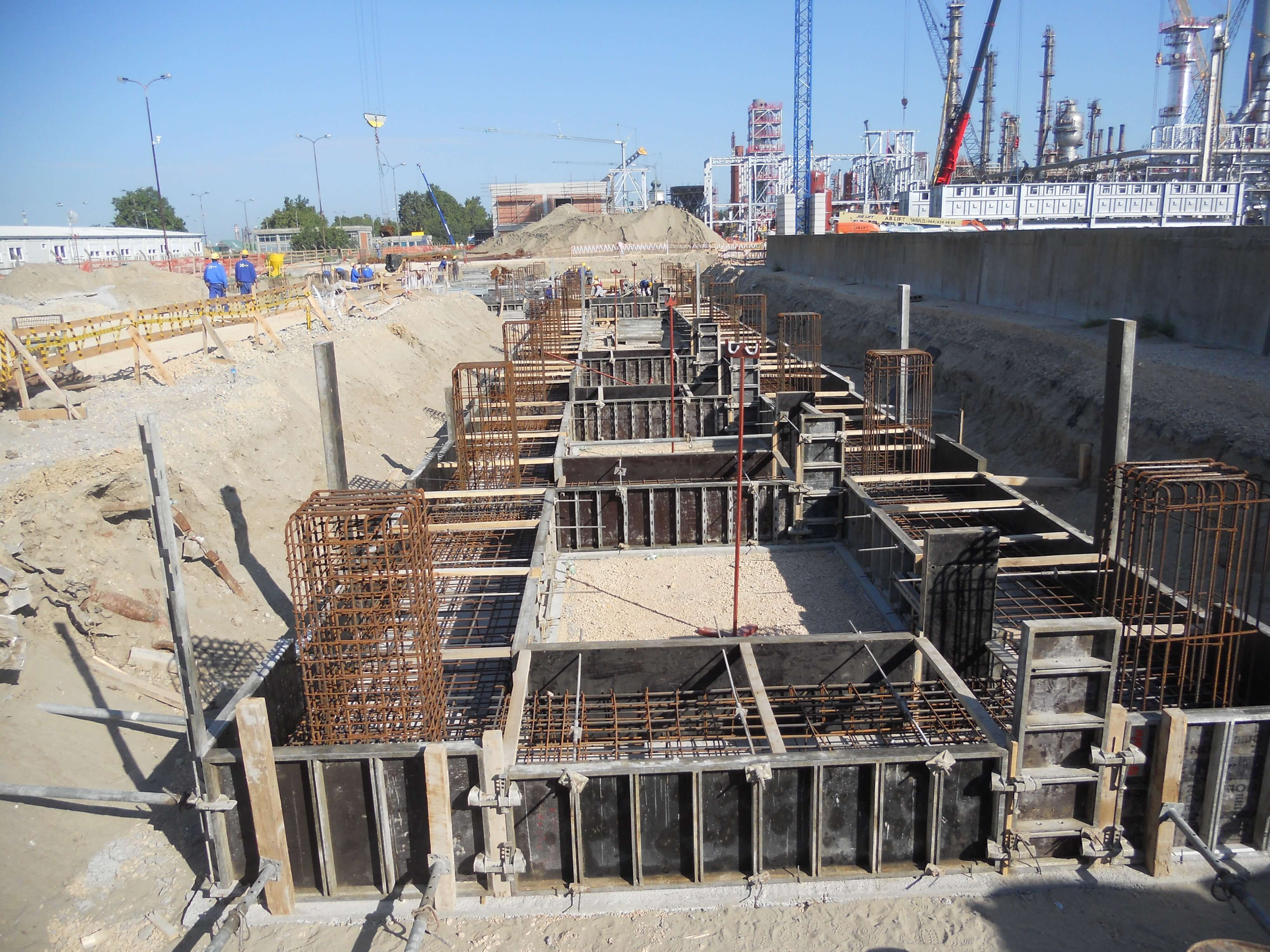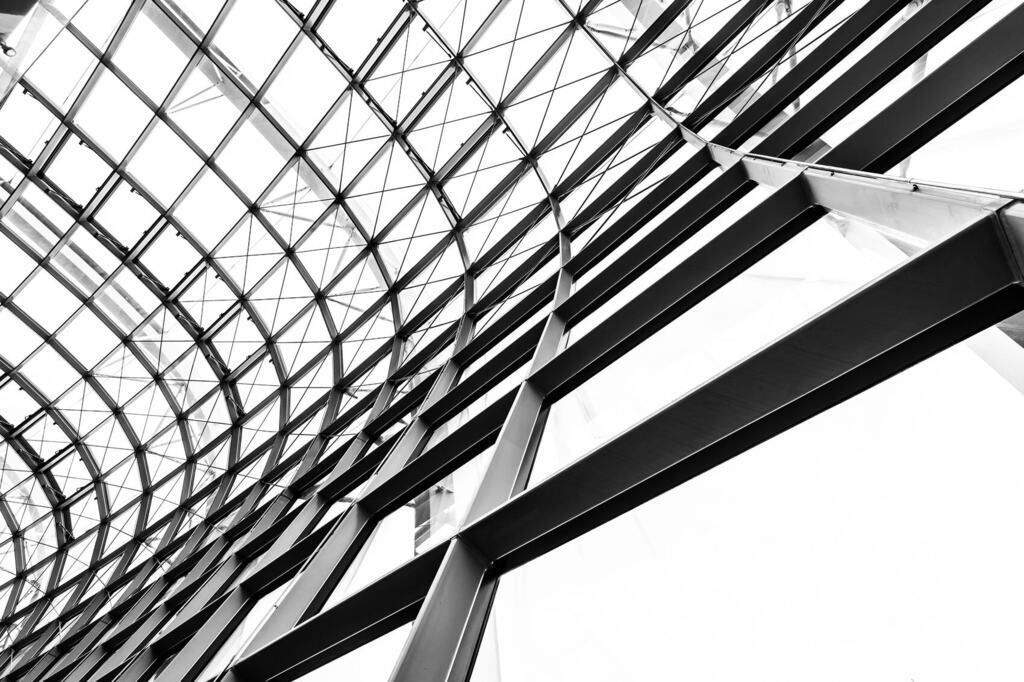Reinforced Concrete: Types, Characteristics & Advantages
Concrete is one of the leading and most widespread construction materials of modern architecture. Made of well-proportioned quantities of cement, sand, crushed rock or gravel, and water, this highly versatile material is used for many applications, including buildings, roads, bridges, dams, canals, tunnels, and many more.
Highly durable, wind and water-resistant, non-combustible, soundproof – these are only some of the features that earned concrete the head position among building materials.
However, architectural innovations and historical research yielded new perspectives on the characteristics of plain concrete. Its high compressive strength allows objects to endure compressive loads, however, in the case where tensile forces are at play, such as in slabs and beams, there is a risk of construction failure due to concrete’s low tensile strength.
That’s where reinforced concrete comes into play. Let’s dive into the features of reinforced concrete, the advantages it offers compared to other building materials, and the different types utilized in construction.
What is reinforced concrete?
Reinforced concrete, also known as reinforced cement concrete, is a special type of concrete in which steel, in the form of bars, rods, wires, cables, or a mesh, is embedded in such a manner to increase its compressive and tensile strength, as well ductility. Invented in the 19th century, reinforced concrete revolutionized the construction industry by improving the quality and extending the durability of constructions.
The two materials – concrete and steel – act together in resisting external forces, such as wind, vibrations, earthquakes, and all other causes of tensile and shear stresses, thus preventing the concrete to crack, crumble, or break altogether.
Depending on the degree of reinforcement, and the type of reinforcing material applied, reinforced concrete can be utilized across construction processes, from slabs, walls, beams, and columns, to foundations and frame constructions. Reinforcement is generally applied to those areas that are predicted to be subject to tension.
Over time, other types of reinforced concrete were designed, such as fiber-reinforced concrete and pre-stressed concrete. Let’s take a look at the characteristics, usages, and benefits of different reinforced concrete types.
Steel Reinforced Concrete
The primary type of reinforced concrete uses rebars, i.e. reinforcing bars to increase tension and compression resistance of the structure. Moreover, steel reinforcement allows for considerable expansion and contraction of the concrete when exposed to both hot and cold conditions.
Fibre-Reinforced Concrete
Usage of fiber as a concrete reinforcement material dates back to prehistoric times. Back then, builders applied straws or horsehair, until fibrous materials, such as steel, glass, and synthetics were invented in the 20th century.
Fiber-reinforced concrete contains small fibers that are uniformly distributed throughout the material. Fibrous reinforcement is ideal for controlling cracks, as well as impact and corrosion resistance of the concrete.
Today, there are various fiber-reinforced concrete types, some of the most utilized being:
- Glass Fibre Reinforced Concrete (GFRC)
- Steel Fibre Reinforced Concrete (SFRC)
- Natural Fibre Reinforced Concrete (NFRC)
- Polypropylene Fibre Reinforced Concrete (PFRC)
- Engineered Cementitious Composite (ECC)
Pre-Stressed Concrete
Pre-stressed concrete is one of the most advanced types of reinforced concrete. It is an effective solution in the prevention of concrete cracking and reduces its brittleness, thus combining the high-strength compressive qualities of concrete with steel’s tensile strength.
This type of reinforced concrete is made in a process called pretensioning, where the high-strength steel is stretched to 70 to 80 percent of its ultimate force, upon which the concrete is poured around and left to cure. High-strength steel increases the load-bearing strength of concrete beams, and is placed in the bottom beam part which is subject to the highest tensile forces.
Pre-stressed concrete offers numerous advantages during construction, from achieving high compressive strength of concrete and elimination of tension cracks to reducing corrosion, shear stress, and weight.

Benefits of Reinforced Concrete
Reinforced concrete, regardless of whether it’s steel, fiber, or pre-stressed, offers various advantages during construction. Primarily, concrete itself has high compressive strength which, coupled with the tensile strength of reinforcement materials, makes the concrete more resistant and enduring.
Besides, reinforcement allows structures to be resistant to fire and water and provides great soundproofing properties.
Another reason behind reinforced concrete’s popularity is its availability across the world, easy production, and operation, and low building and maintenance costs. Reinforced concrete allows for versatility in forms and shapes into which it can be molded, as well as varied structure parts where it can be used – from foundation to roofing.
The possibility of it being either precast or cast-in-place (in situ), reinforced concrete is an ideal solution for a variety of different construction projects.
To Wrap Up
Reinforced concrete is used across engineering projects – from large-scale civil engineering projects, superstructures, and water-based designs, to domestic applications. As it provides high durability, strength, and resistance to constructive elements, designing modern structures would not be possible without reinforcement.





